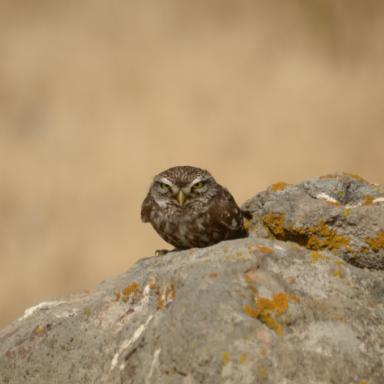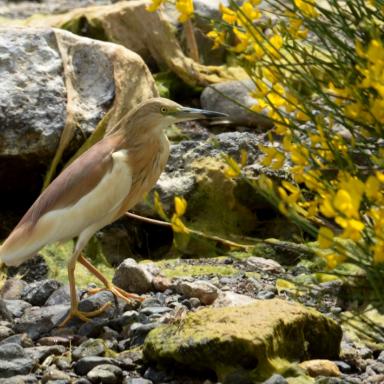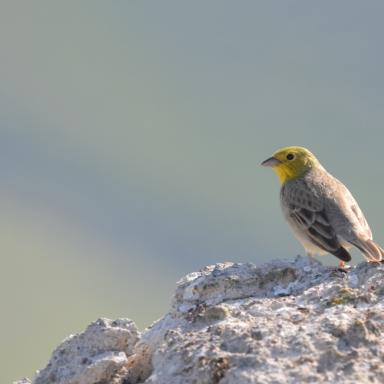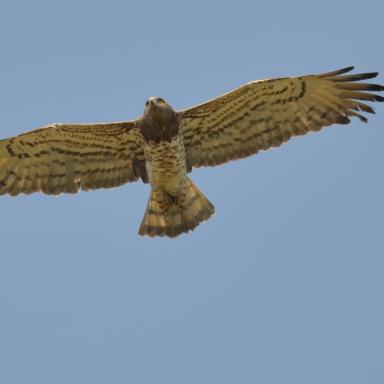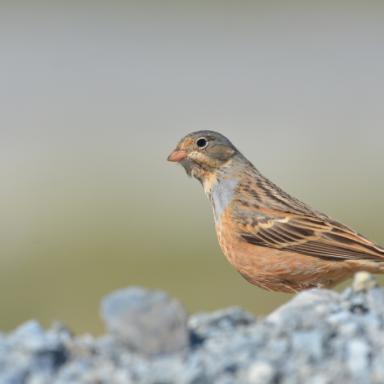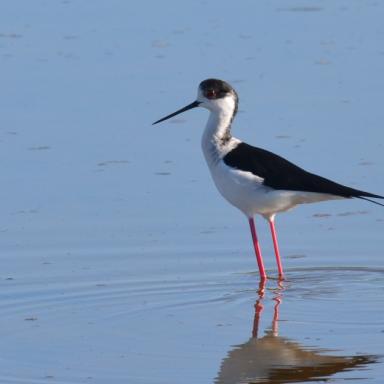Birdwatching around Western Lesvos
Western Lesvos is one of the most famous and loved areas among visitor birders, especially for the breeding bird species (summer visitors or resident), but also for their impressive migration passage, during Spring and Autumn. The dominant habitat type is garrigue (also called phrygana), of low spiny scrubs followed by oak forest, cultivations and groves, small wetlands, rocky shores and islets.
The “flag” bird of the area is undoubtably the Cinereous Bunting (Emberiza cineracea), with only few records outside of western Lesvos and stable occurrence in Europe only here and Northern Chios island! Together with the Cretzschmar’s Bunting (Emberiza caesia), Black-eared Wheathear (Oenanthe hispanica), Isabelline Wheathear (Oenanthe isabellina), Masked Shrike (Lanius nubicus), Eastern Orphean Warbler (Sylvia crassirostris), Eastern Bonelli’s warbler (Phylloscopus orientalis), and several other summer visitor species to the wider mediterranean or even east mediterranean region, form an impressive “wish-list” for the north or central European birder. Many more birds are resident (with a mediterranean or asian geographical distribution) and can be observed here more easily, such as: the Western Rock Nuthatch (Sitta neumayer), the Blue Rock Thrush (Monticola solitarius), the Rock Sparrow (Petronia petronia), the Chukar (Alectoris chukar), the Long-legged Buzzard (Buteo rufinus), the Sombre Tit (Poecile lugubris), the Middle Spotted Woodpecker (Dendrocopus medius) etc. Finally, western Lesvos is the area where the White-throated Robin (Irania gutturalis), a vagrant bird to the continent, is being recorded (at least once every late Spring…) annually the last years.
Every Spring the garrigue flourishes providing great amounts of inventerbrates for the birds, allowing some of the most characteristic and rare birds of Greece to breed here in impressive densities. At the same time, the valleys and mouths of small rivers and torrents together with the cultivated fields (irrigated land and olivegroves and vineyards), that interrupt the vast lava and garrigue land, serve as precious resting and refueling stations for the migrating birds (also in Autumn!). This also holds true for small local tree gatherings (e.g. at the chapel just after the Tsichliontas River, at the Eressos to Sigri track road).



